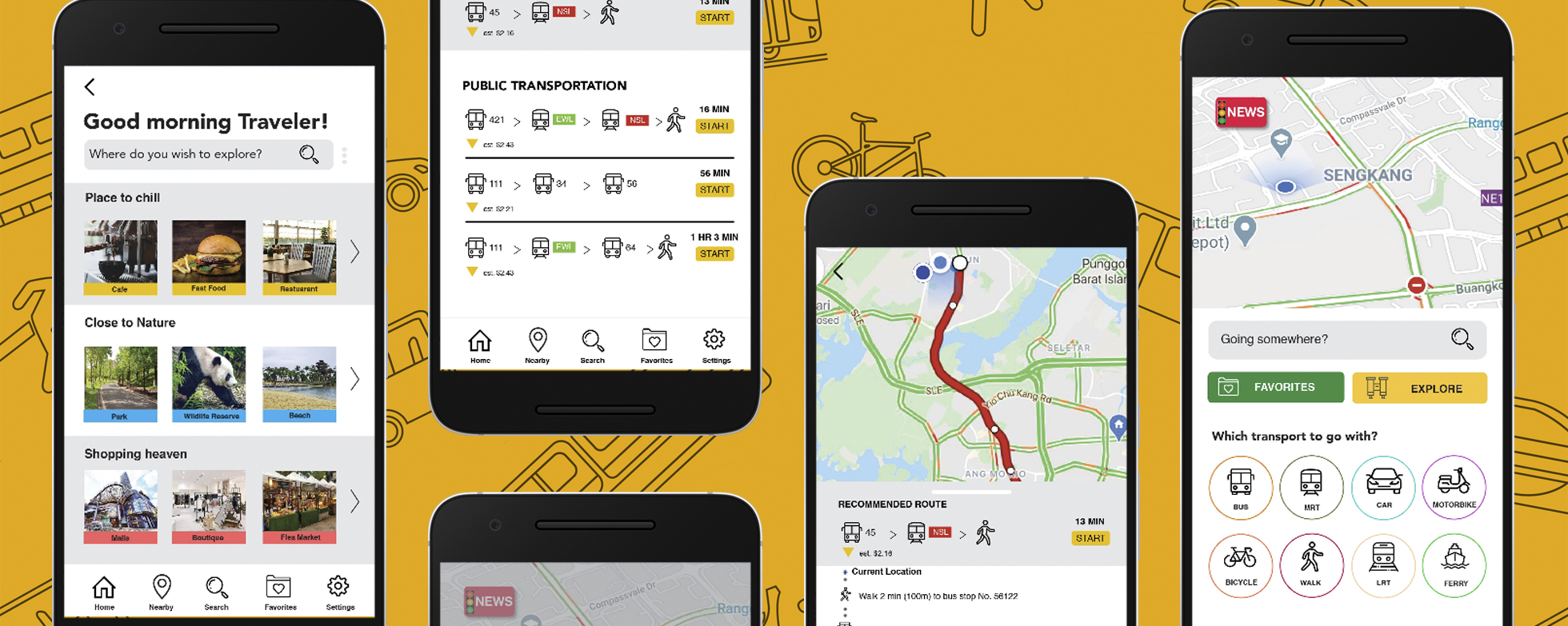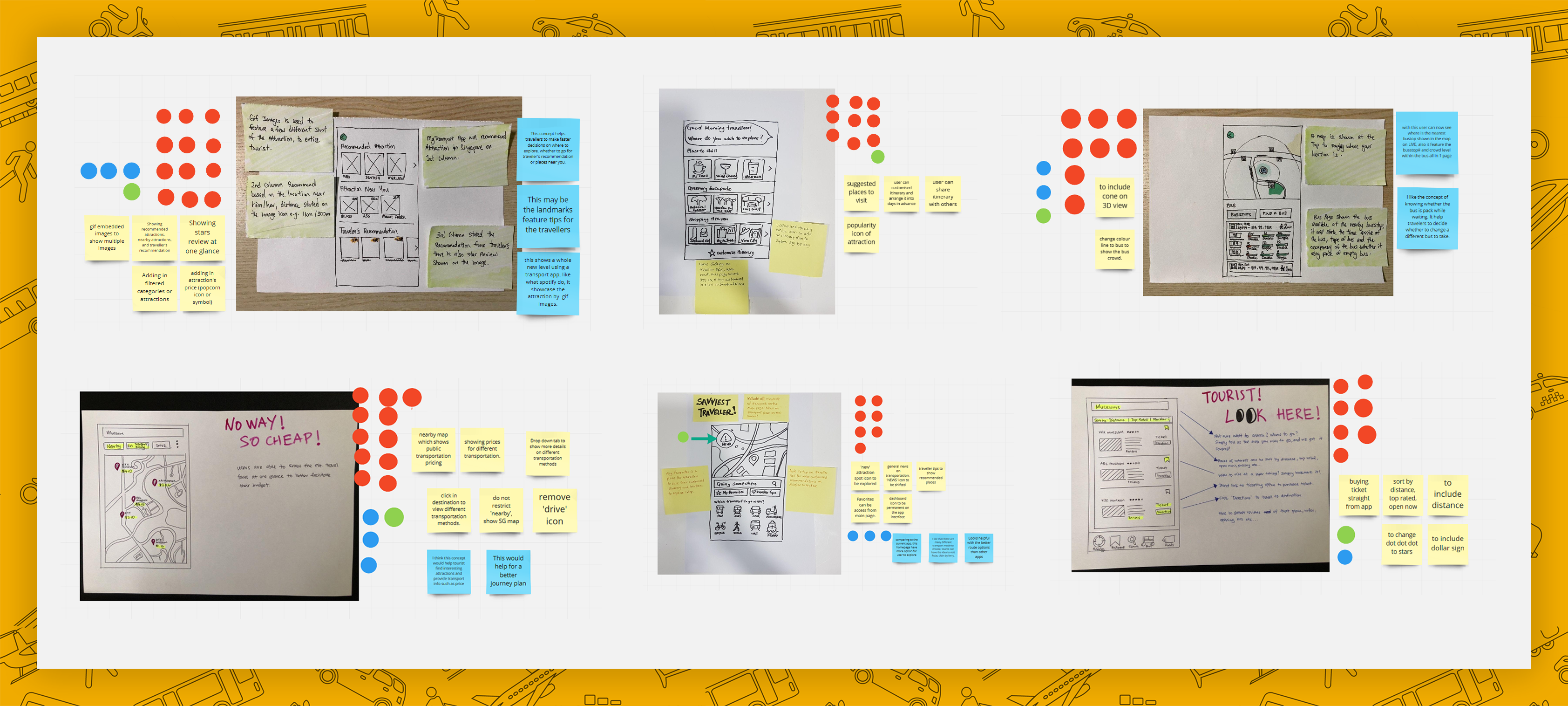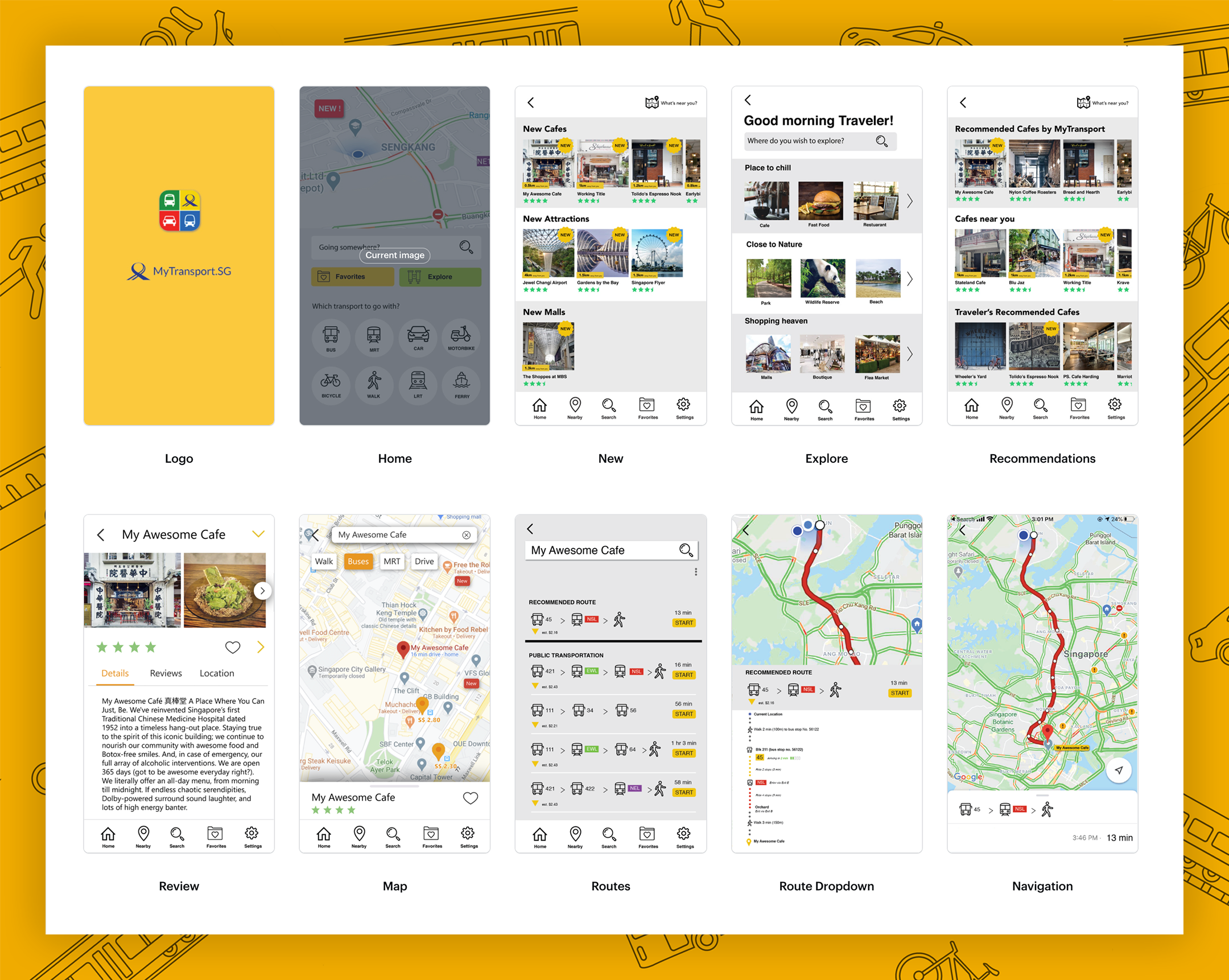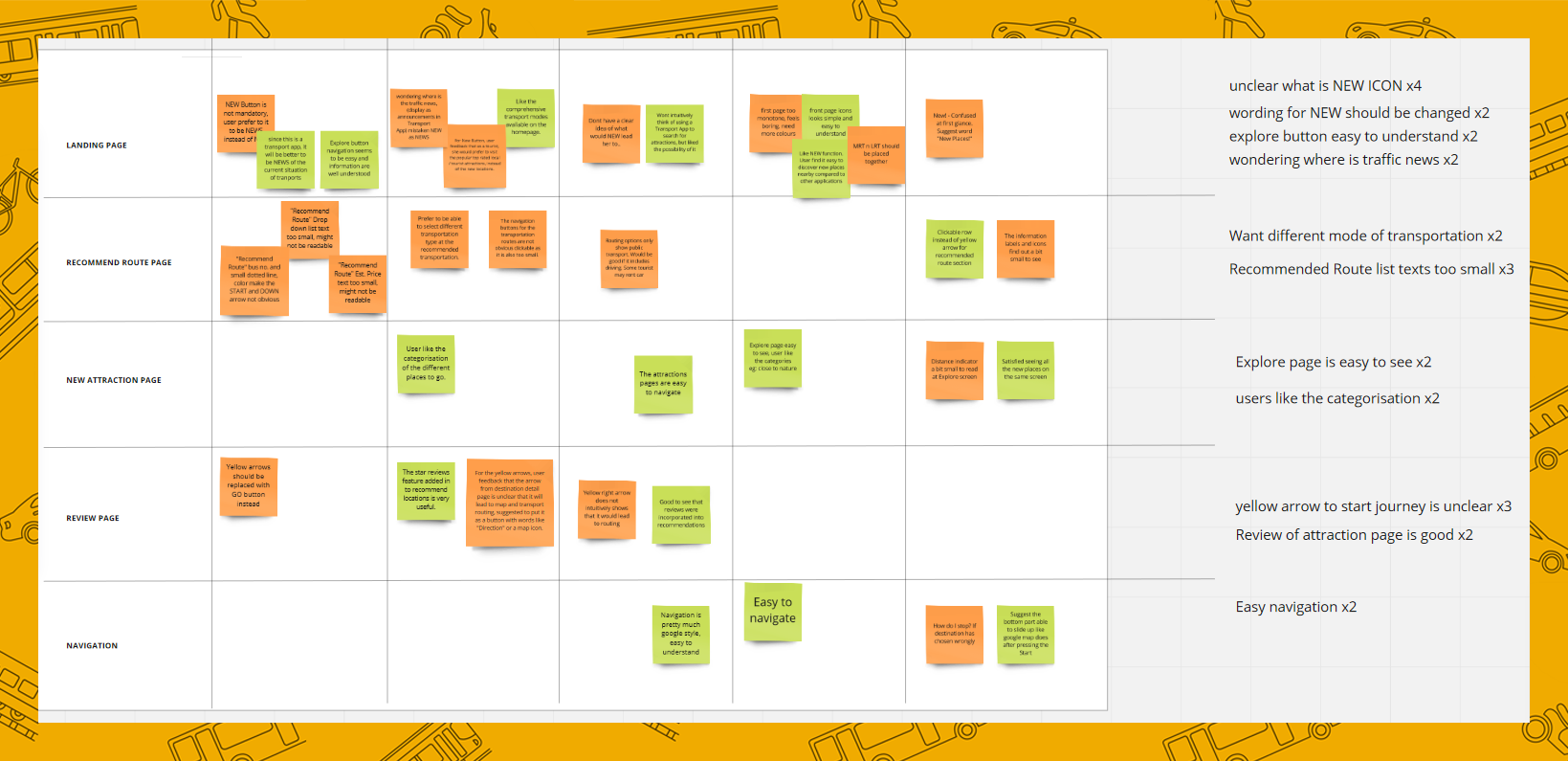The Project Brief
Our task was to identify problems and opportunities with the existing mobile application which is MyTransport.SG. Using design sprint, a fast paced, time — constrained and five-phase process to identify goals, generate ideas, and lastly build an interactive prototype for testing within 5 days. And get to understand, ideate, decide, prototype and test stages within a short week.
About MyTransport.SG
MyTransport.SG was developed by the Land Transport Authority (LTA) of Singapore. LTA is a statutory board under the Ministry of Transport that spearheads land transport developments in Singapore. The mobile application is to provide information and e-Services such as real time information on bus arrival timing for all land transport users.
Design Sprint, a process of ideating and solving the big challenge by prototypes and testing with the participants within five days.
Map
Noting Down the Shared Feedback
We started the sprint with "Ask the Experts". We listened to feedback from the team members to find out the problems that the product may have. We also asked ourselves, who are the current users for this product, and started proposing new group of target audience. Lastly, we questioned what the product would look like in 2 years' time, and what would be an ideal scenario.
Each of the members proceeded to write notes beginning with "How might we ..." which helps to change one’s perspective by turning problems into opportunities. After putting our HMW together, we started to vote for one HMW that the team should focus on for this Design Sprint. The decider got 5 votes while the rest can vote 3.
What is a big problem?
The HMW with the most votes is:
HMW help foreigners/ travellers navigate around Singapore.
Next, we created a voting tree where we picked out all the voted HMWs and put them hierarchically, with the highest votes on the top. This is to find out the most important challenge to work on.
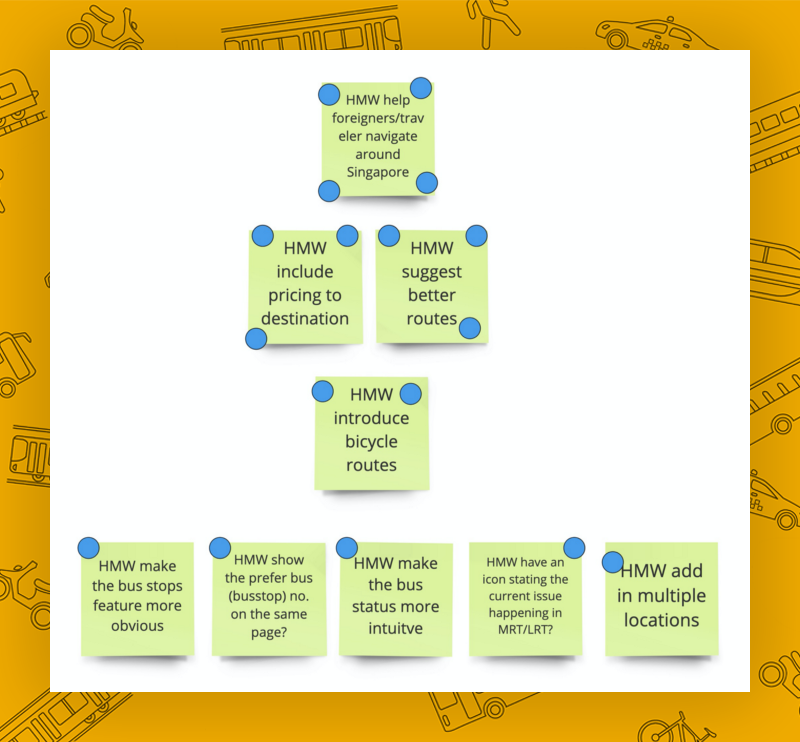
Voting Tree
Aspiration in 2 years time
After which, we charted a Long-term Goal by asking ourselves where we want the product to be 2 years from now. To meet the long term goal, we listed down several sprint questions. Then the facilitator set a timer of 5 mins for everyone to vote. Orange is the decider's vote.
In 2 years time ...
The Long term goal with the most votes is:
The app will be the number one choice for foreigners and travellers, and able to reflect all the necessary pricing and information.
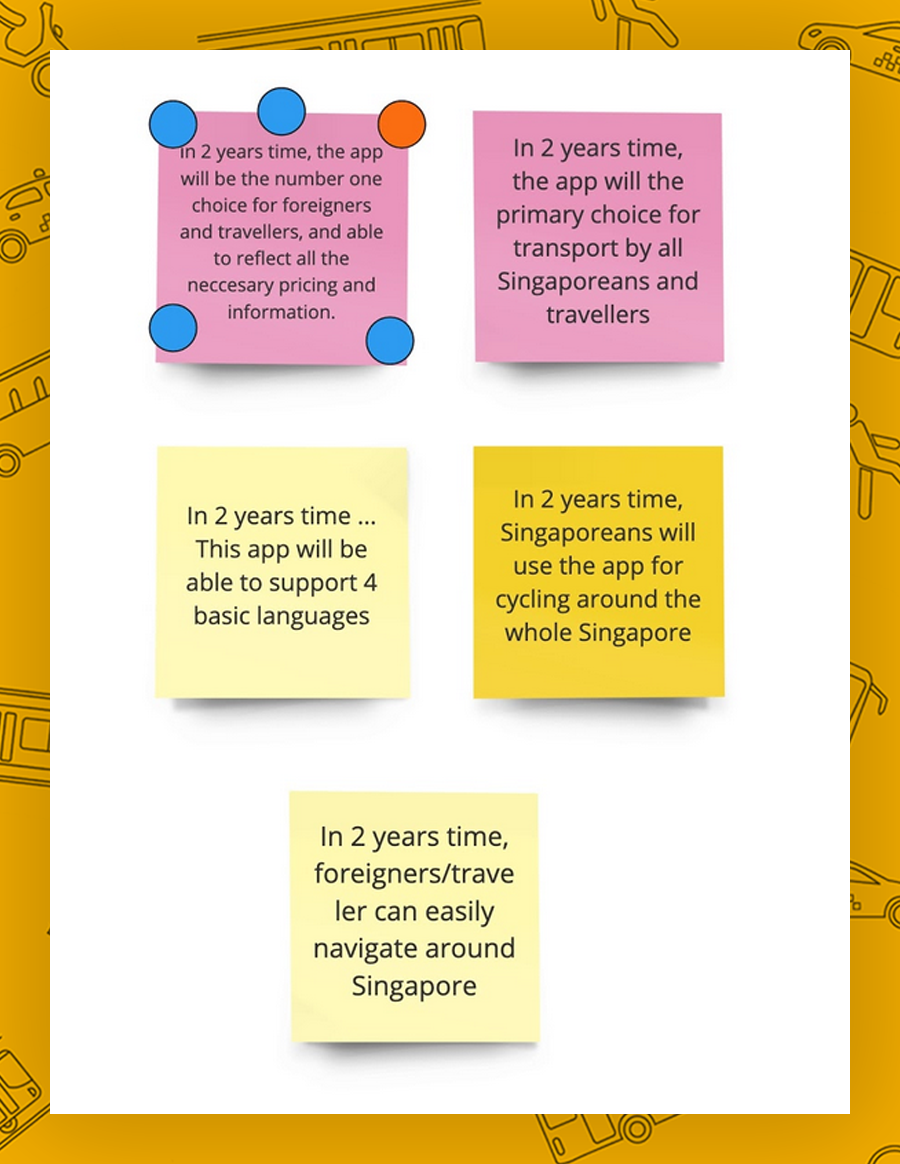
Long Term Goals
Figuring Out the Biggest Challenges
We listed down 2 sprint questions each, where we collectively voted on 3 sprint questions. Facilitator set 10 mins to write down 2-3 sprint questions while voting is only 5 mins.
How Can We Fail?
The sprint questions, mainly focusing on traveller and tourists are:
- Can we ... include an auto translation tool for foreigners?
- Can we ... link up with tourism board to come up with tourist spot and interesting stories to catch tourists’ attention?
- Can we ... have accurate pricing on bus fares/mrt fares/ERPs?
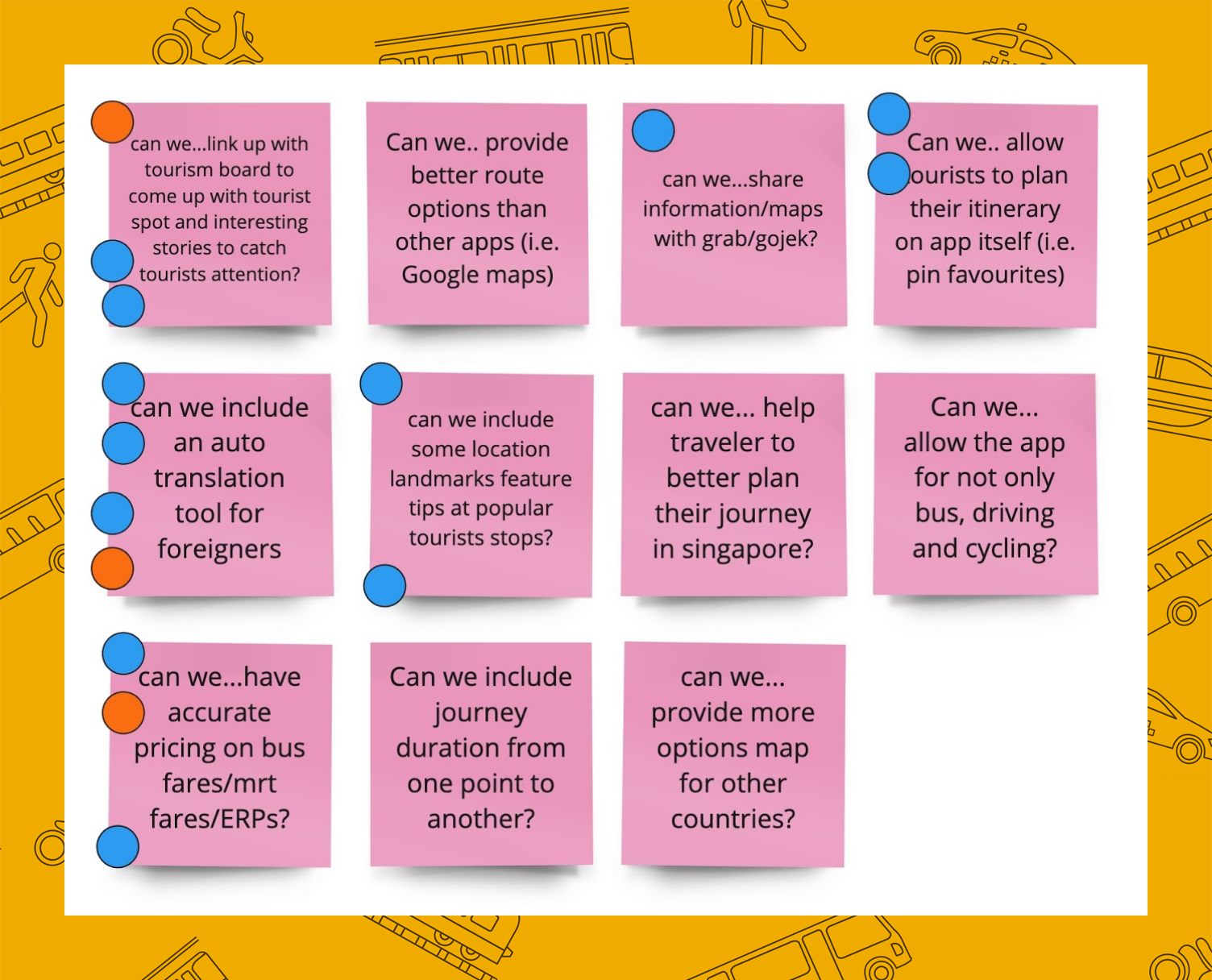
Sprint Questions
Choosing the Target from a Map
Finally, we mapped out probable user flows consisting of 5 to 15 steps, showing how different user groups interact with the product. At the start of the map, we listed down the different "Actors" that are important in the user journey. The actors represent the different customers using the product. Our main actors are Tourists, Expats, Local Commuters and foreign helpers and migrant workers.
We then started matching our HMW notes to the part where it corresponds with a specific step of the user flow. Looking back at the team’s Long Term Goal, Sprint Questions, Map, and How Might We notes, the decider then chose a target user and user flow on the map.
The chosen user flow is for Tourist who is the identified target user.
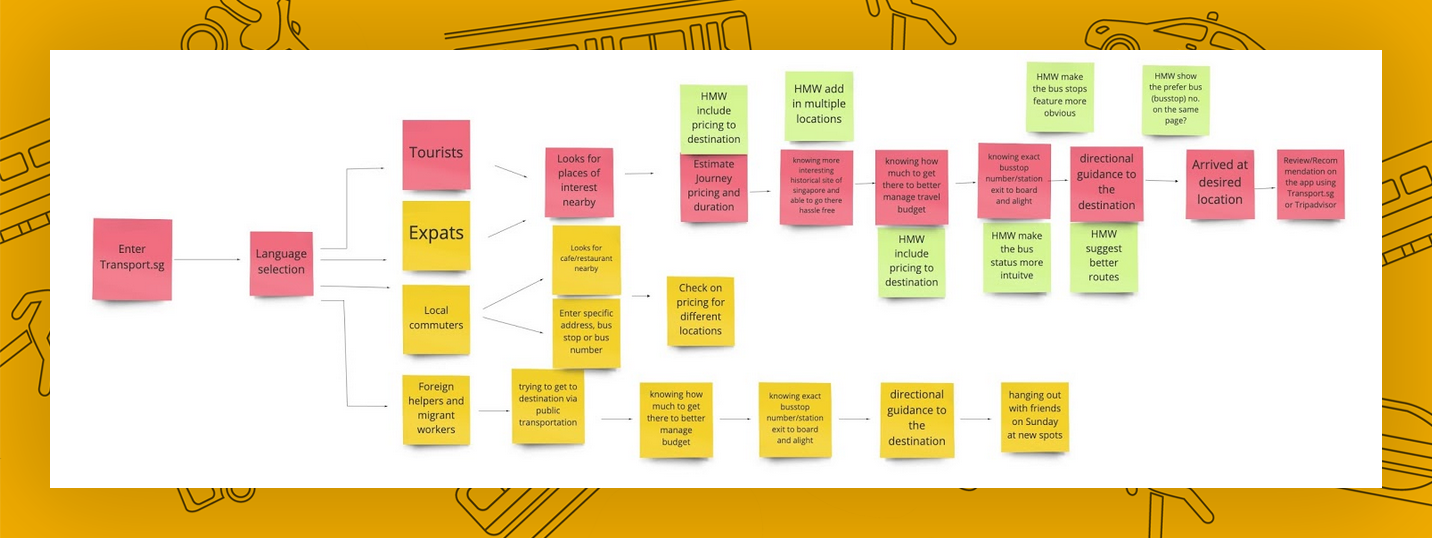
Design Sprint Map
With this in mind, we started the sketching.
Sketch
Finding the Inspiration in a Flash
Each member was given 3 mins to share (we did it remotely due to COVID-19 situation) 1–3 products which we think are inspiring examples for us to learn from. We gathered ideas from digital products such as Airbnb, Citymapper, GoogleMap, Spotify & SG Buses.
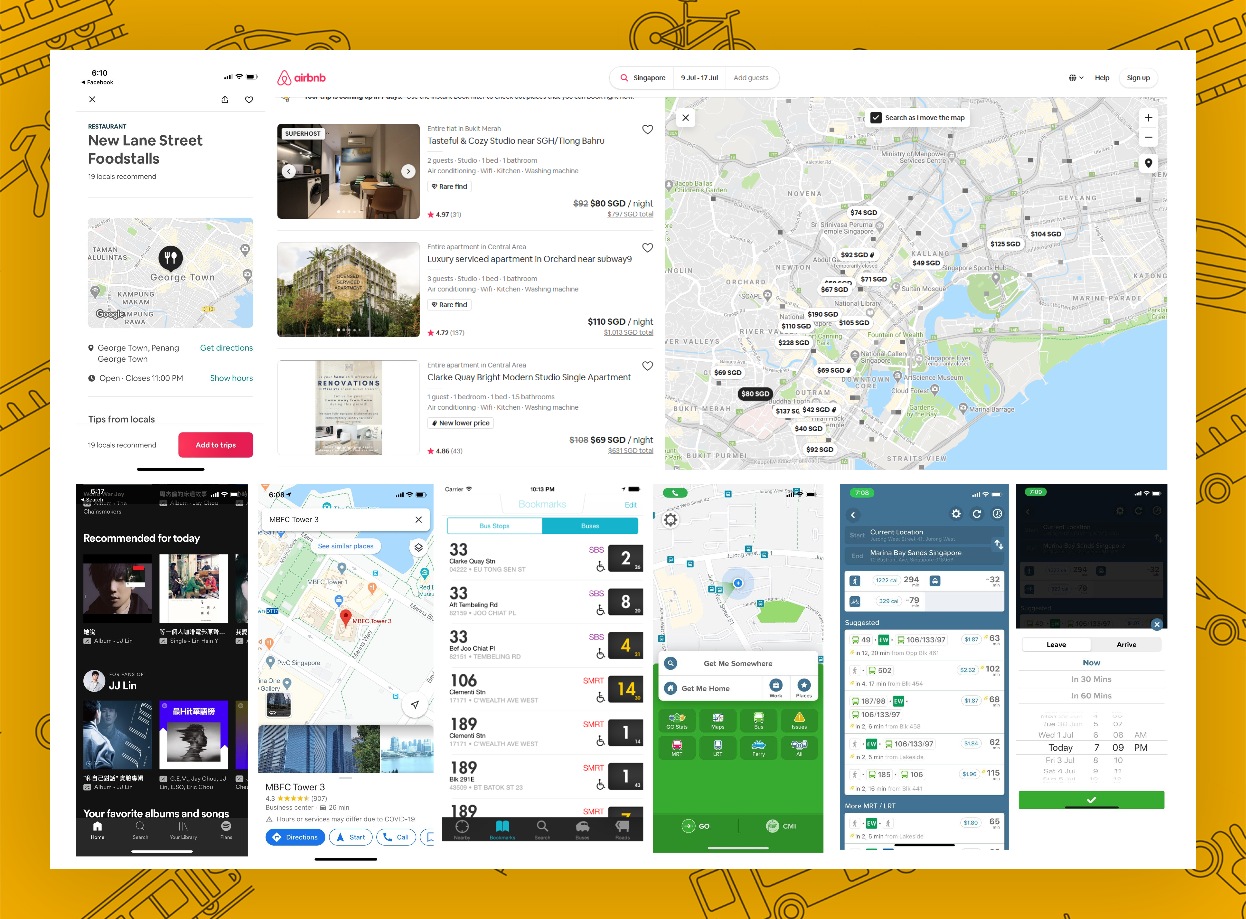
Lightning Demos
As we go through some of these examples, we wrote down several cool features/findings that we could possibly adopt. Below are some of the inspirations we populated as a team.
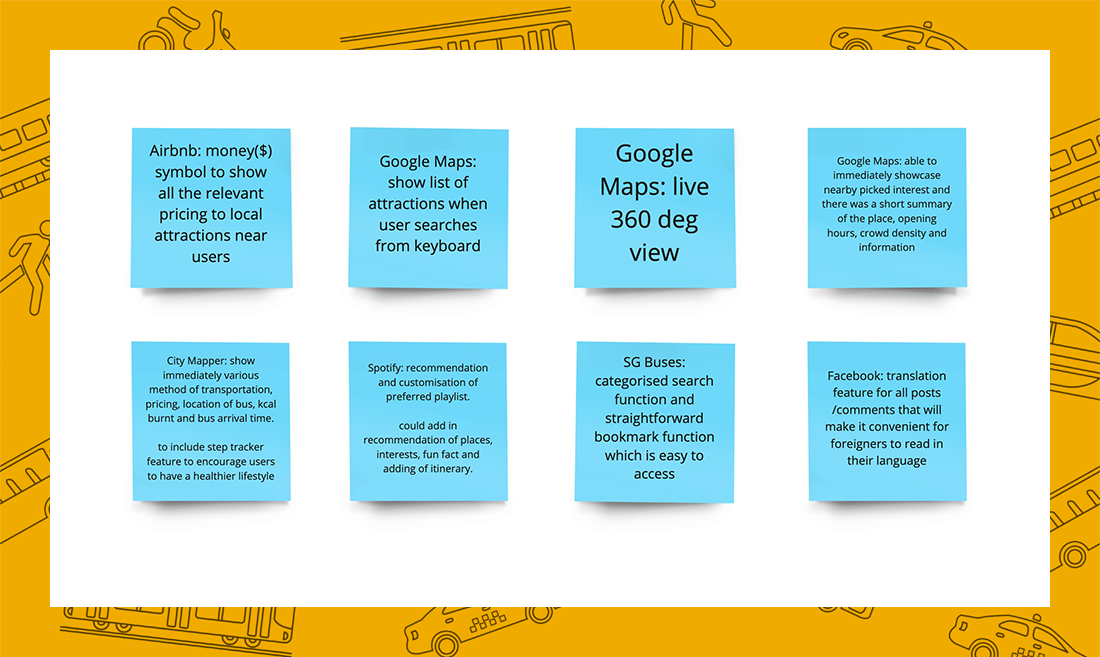
Ideas and Inspirations
Tangible Ideas
Part 1 — The next 15 mins was spent Note-taking. Referencing our long term goal and sprint questions, we penned down some of our favourite lighting demos presented earlier, and kept writing to let our mind flow.
Part 2 — We started generating Ideas. We spent another 20 mins doodling. By looking at the notes we have written, each of us chose 1 feature we would like to explore and start drawing our ideas out.
Part 3 — It was then time to switch up the tempo. Crazy 8 is where we each chose 1 idea we love, and pushed ourselves beyond its initial idea by drawing it in 8 different ways under 8 mins. Everyone was rushing to complete this task within the short timeframe.
Part 4 — Finally, we came to the 3 Step Concept. We were given 45 mins each to prepare 3 sheets of A4 paper for our sketches, forming our best ideas deriving from Crazy 8. Annotations were inserted at the side of our sketches to make sure that the sketches were self-explanatory. Last but not least, we added a catchy title on the top, in hope of capturing attention from the team.

Example of a 3 Step Concept
And it was time to make decisions.
Decide
Heat-Map
- Keeping our sprint questions in mind, we looked at each of the concepts. We indicated our interest by casting our votes on ideas we think it’s best to pursue. On top of that, we also built onto each concept by adding in additional ideas/features on the side of the sketches.
Speed Critique
- We called out ideas with higher votes, and the facilitator will quickly present or narrate each concept and the big idea behind these sketches. The facilitator would also review concerns and questions raised by each team member if any.
- The facilitator will also ask if anyone voted on the sketches for a different reason than what he/she has explained, or if there’s anything anyone voted on based on other reasons that wasn’t discussed.
Straw Poll
- In this section, each of us were given 1 blue dot, except the Decider who was given 3 blue dots. Each of us will have to cast the blue dot vote on the best concept and give a brief explanation on why we chose that by writing down on sticky notes beside the sketches. The decider will then decide where to cast his/her votes.
Supervotes
- The decider gets 6 Supervotes (green dot). Those sketches with the Supervotes "WIN". We will plan our prototype around these ideas and put them to the test.
What were chosen: The decider eventually picked on a revamped homepage with more transport features e.g. Bicycle, Walk, LRT, Ferry and Explore function. Additional pages such as Recommended attractions to visit were also included. The team shall also work on displaying estimated travel fares to destinations on the map. We would also explore showing a map in the Bus section to direct users to the bus stop.
